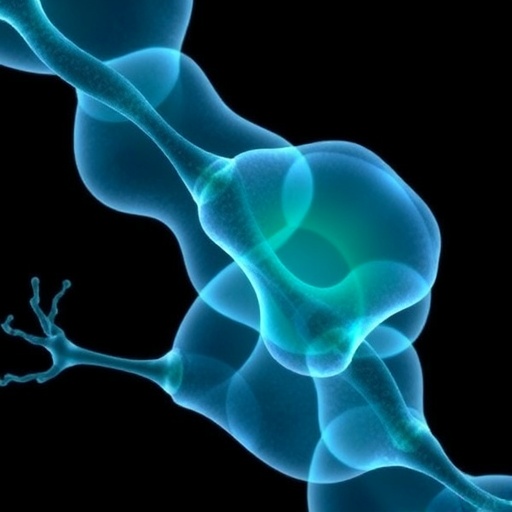In a groundbreaking study published in the Journal of Medical Biology Engineering, researchers led by a dedicated team comprising T. Adali, H. Vatansever, and H. Ensarioğlu explore the innovative world of biomimetic materials. Their latest work, which focuses on gellan gum hybrid hydrogels, presents an exciting advancement in the field of tissue engineering and regenerative medicine by simulating extracellular matrices pertinent to the culture of mouse embryonic stem cells. This research not only enhances our understanding of stem cell behavior but also opens avenues for more sophisticated applications in biomedical engineering.
The central theme of the study revolves around the significant role played by the extracellular matrix (ECM) in cellular functions, including cell adhesion, differentiation, and growth. The ECM is far more than a mere scaffold; it continuously interacts with cells through various biochemical cues and physical properties that affect their fate. The degradation of native ECM and failure to replicate its complex environments often hinder tissue regeneration and repair. Thus, the development of bioinspired materials that mimic these environments is crucial.
Gellan gum, a naturally occurring polysaccharide, serves as an outstanding candidate for creating hybrid hydrogels. It is biocompatible and biodegradable, making it suitable for applications in cell culture systems. The study emphasizes the unique properties of gellan gum, which allow for tunable mechanical properties that can better simulate the stiffness and elasticity of natural ECMs. This flexibility in designing hydrogels is crucial, as it allows researchers to tailor the material properties to influence stem cell behavior significantly.
In creating these hybrid hydrogels, the research team integrated various materials and approaches to enhance the physical and biochemical properties of gellan gum. The combination of gellan gum with other biopolymers not only improves the mechanical strength of the hydrogel but also mimics the nanoscale architecture of the ECM. This is paramount, as many cellular interactions occur at this level, influencing fundamental processes such as cellular signaling and tissue formation.
One of the standout features of the developed hydrogels is their ability to support the growth and differentiation of mouse embryonic stem cells. By leveraging the favorable properties of gellan gum, the researchers demonstrated that their hybrid system could effectively support stem cell proliferation while also enabling their differentiation into various cell types. This is a significant advancement, as it showcases the potential of synthetic and natural materials to work harmoniously to support the complex requirements of stem cell culture.
Furthermore, the use of gellan gum in this context has implications beyond just structural biology. The potential for gellan gum hybrid hydrogels in drug delivery systems and wound healing is also considerable. As the study indicates, these materials can be functionalized with various bioactive molecules, allowing for controlled release mechanisms that could effectively target diseased tissues. This versatility positions gellan gum hybrid hydrogels as a promising candidate for multiple applications within the biomedical field.
The research team employed advanced characterization techniques to assess the properties of their hydrogels. Techniques such as scanning electron microscopy and rheometry provided insights into the microstructure and mechanical responses of the hydrogels under various conditions. The results corroborated the hypothesis that custom-designed hydrogels could be tailored for specific applications, optimizing the interaction between stem cells and their microenvironments.
Moreover, the study’s publisher correction highlights essential updates in their findings, emphasizing the importance of accuracy in scientific reporting. This attention to detail reaffirms the study’s credibility among the scientific community, especially considering the implications these findings may have in broader applications within regenerative medicine. The ongoing commitment to refining research ensures that the data generated remains reliable and can authentically feed into future studies.
The detailed exploration of the hybrid hydrogels’ properties paves the way for critical discussions around their potential scalability and production methods. Manufacturing hydrogels that maintain consistent properties at a larger scale will be crucial for transitioning from laboratory research to clinical applications. Researchers are optimistic that refining the production processes can lead to widespread adoption of these materials in various medical applications.
Furthermore, the study prompts a reevaluation of existing frameworks for stem cell research. Traditional methods often fail to mimic the in vivo environment that cells thrive in. This research initiative addresses that gap by providing a relevant platform that reflects the complexity of the natural ECM, and sets new standards for future studies in stem cell biology.
As researchers continue to innovate, the interconnections between biomaterials, cellular behavior, and their applications in disease modeling and regenerative therapies will become increasingly vital. The integration of gellan gum hybrid hydrogels into existing methodologies is expected to spark further investigation and experimentation, promoting an era of enhanced regenerative health solutions.
In conclusion, the research by Adali and colleagues presents a comprehensive approach to biomimetic hydrogel design, yielding significant implications for regenerative medicine and beyond. The findings represent a pivotal step toward developing advanced materials that can accurately simulate natural environments for stem cells. This study not only furthers scientific understanding but also encourages a paradigm shift in how we approach developmental biology and tissue engineering.
Subject of Research: Biomimetic Gellan Gum Hybrid Hydrogels for Extracellular Matrix Simulation in Mouse Embryonic Stem Cell Culture
Article Title: Publisher Correction: Biomimetic Gellan Gum Hybrid Hydrogels for Extracellular Matrix Simulation in Mouse Embryonic Stem Cell Culture
Article References: Adali, T., Vatansever, H., Ensarioğlu, H. et al. Publisher Correction: Biomimetic Gellan Gum Hybrid Hydrogels for Extracellular Matrix Simulation in Mouse Embryonic Stem Cell Culture. J. Med. Biol. Eng. (2025). https://doi.org/10.1007/s40846-025-00990-z
Image Credits: AI Generated
DOI:
Keywords:




